Author: THOR HARTVIGSEN
Translation: DeepTech TechFlow
In the last bull market, L1s such as Solana, Avalanche, Fantom, and Polygon performed exceptionally well in terms of price appreciation. Some may think that the dominance of this infrastructure is a characteristic of an industry still in its early stages.
Has there been significant change from 2021 to today? From the price performance below, it seems that the situation has not changed.
L1s + L2s + DeFi 30-day Performance

This raises a question: Is the current exceptional price performance related to fundamental improvements, or is it just the same old routine we saw in the previous market cycle? This article analyzes 8 top-performing L1s in an attempt to answer this question.
Solana (SOL)

Solana's difference from most L1s is its use of parallel processing to validate and execute transactions without the need for additional scaling layers. This makes it a platform with low user interaction costs and high capital efficiency.
Daily Active Addresses on Solana
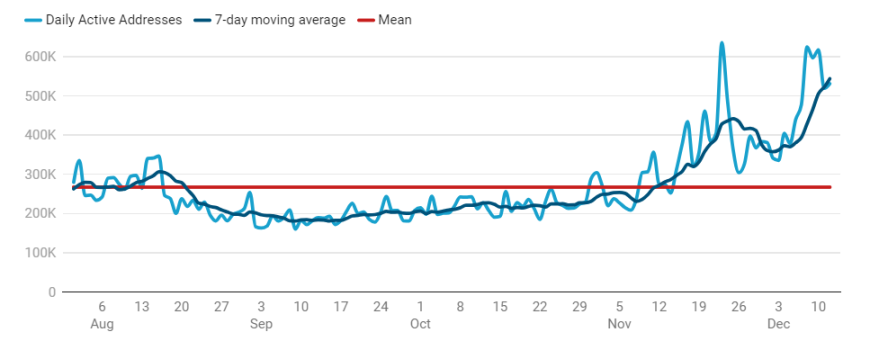
In terms of user activity, Solana is currently one of the most popular blockchains in this area, mainly due to new protocols airdropping tokens to early users. More and more people are interested in utilizing Solana's virtual machine capabilities, such as Eclipse using it to expand Ethereum's current capabilities. One factor contributing to Solana's rise is the decreasing annual issuance of its native token SOL, as its inflation rate is declining.
Here are some ecosystems on Solana, and if the ecosystem continues to thrive, token prices should see decent gains:
Jito ($JTO: $3 billion FDV): Jito, as Solana's primary liquidity staking protocol, has gained significant popularity in the crypto community after airdropping tokens to over 10,000 users.
Bonk ($BONK: $1.4 billion FDV): $BONK, as the most popular community coin on the Solana blockchain, has a huge market value and has seen a price increase of about 400% in the past 30 days as more people use the network and participate in it.
Marginfi ($MRGN: Not yet issued): Marginfi is a decentralized lending protocol with a current total locked value (TVL) of over $240 million, currently rewarding users with points for interacting with the platform. These points will be used in the future to airdrop their upcoming tokens to users. If you are interested in airdrops, you can check out the recently released airdrop calculation rules.
Avalanche (AVAX)

Avalanche is a fast and scalable platform that allows developers to build custom blockchains or use existing subnets (divisions of a blockchain). The Avalanche main network actively uses three blockchains, as shown in the image below.
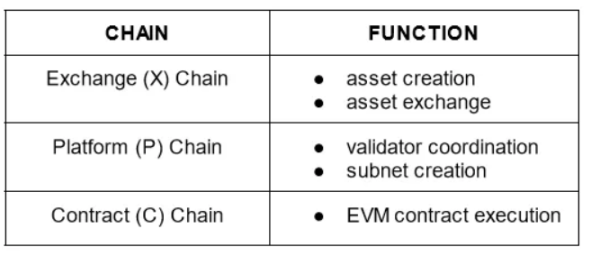
Most of us are familiar with the C-Chain, as that is where DeFi applications reside. The Avalanche main network itself is a special subnet. Currently, various projects are deploying their own subnets on the system, with some notable projects including:
- Beam (Gaming): Aiming to provide a community-driven approach and a platform for developers
- UPTN (Web3): Piloting in South Korea, integrating blockchain technology into real-world businesses
- DFK (Gaming): gameFi platform, Defi Kingdom
Avalanche's TVL
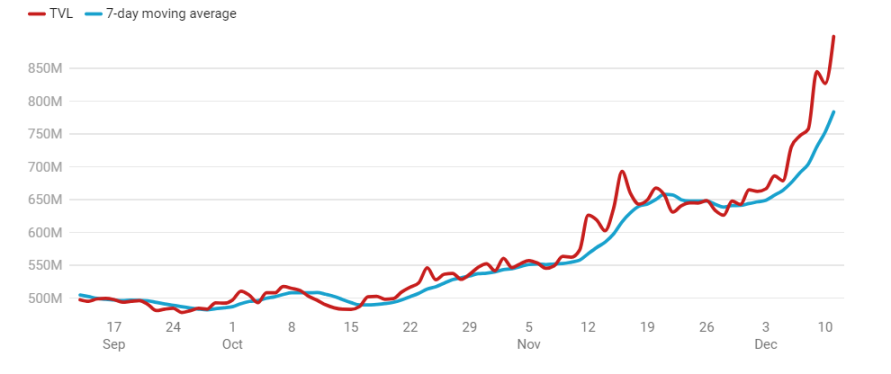
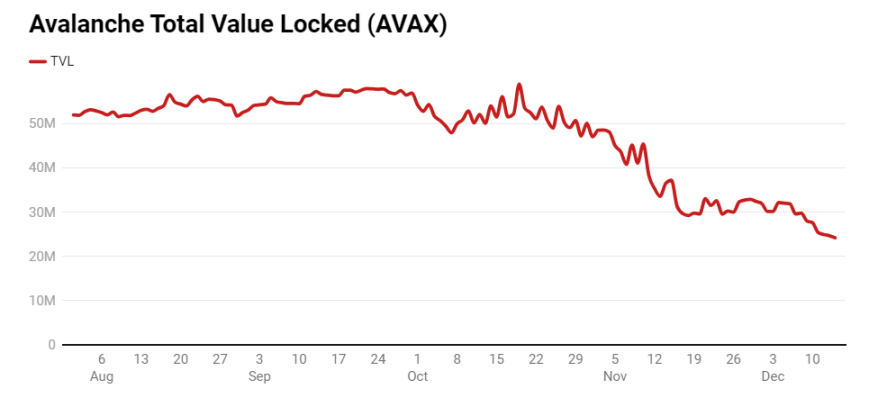
With AVAX breaking out of a long-term price range and TVL significantly increasing, the Avalanche ecosystem is gradually gaining more momentum. Importantly, this growth is due to the appreciation of AVAX, not additional token inflows.
A bullish case for Avalanche is the increasing number of platforms deploying subnets, choosing this approach over the L2 solutions currently available in the market to meet the specific needs of their applications.
If the ecosystem continues to show a sustained upward trend, some Avalanche ecosystems may perform well:
- Trader Joe (JOE: $3.0781 billion FDV): The top DEX on the chain and a major component of the ecosystem, has been actively rolling out updates and generating significant fees with a surge in trading volume.
- Benqi (QI - $1.8274 billion FDV): Benqi offers a range of DeFi products such as lending, liquidity staking, and validator leasing. With a huge increase in TVL in its liquidity staking sector, QI's price has risen by about 250% in the past two weeks.
Near (NEAR)

Near is a blockchain, also referred to as an operating system, that provides interoperability across any blockchain. Their core focus is on scalability, achieved through "sharding" to divide the network into smaller parts to process transactions more efficiently while maintaining speed, low cost, and decentralization.
Daily Active Addresses on Near
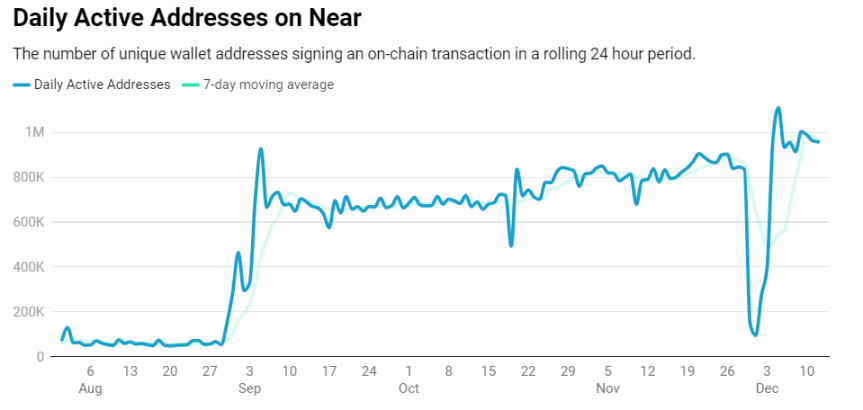
Through a collaboration with EigenLayer, Near is set to launch a "fast final layer" that will provide faster and cheaper transactions for Ethereum rollups. The testnet is expected to launch in the first quarter of 2024. Additionally, real-time market data provider Pyth has also entered Near, offering their oracle solution. This allows on-chain applications to easily use stocks, commodities, and market data.
If the ecosystem continues to grow, some of Near's ecosystem applications may perform well:
Meta Pool (META: $2.27 million FDV): A multi-chain liquidity-based ecosystem offering a range of products including LSTs, liquidity provisioning, launchpads, and bonds. Meta Pool's cumulative TVL is $42.56 million, with 97% of the value on Near.
Ref Finance (REF: $9.39 million FDV): With a TVL of $16.87 million, Ref is the largest AMM on Near, where users can engage in spot or margin trading at low transaction costs.
Injective (INJ)

Built on the Cosmos SDK, Injective is a blockchain for financial applications, offering fast transaction processing and low gas fees, along with strong interoperability with various other chains such as Ethereum and Solana.
INJ Price Trend Since the Beginning of the Year
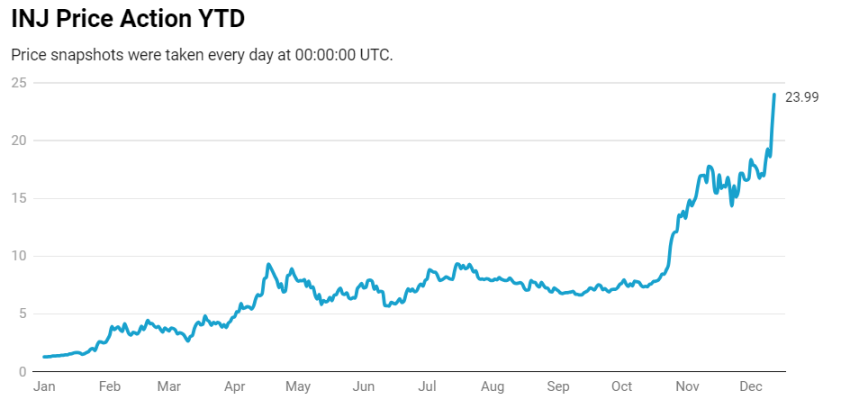
INJ Trading Volume
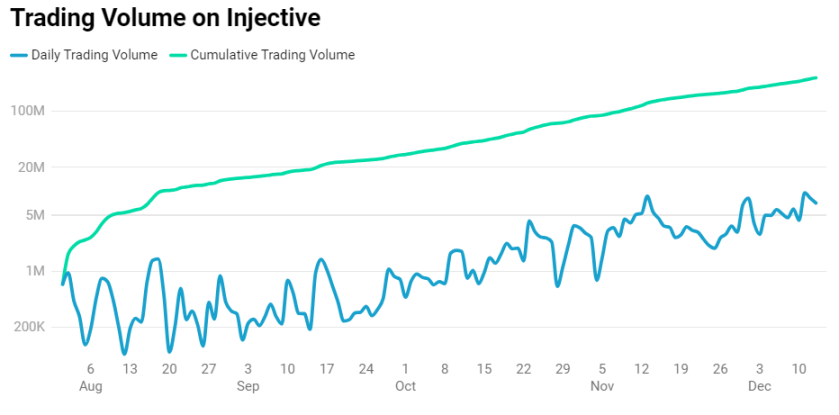
The project has received funding from numerous well-known tech and crypto industry investors. Despite its large market value, on-chain activity is not high apart from staking, but there are efforts to attract builders to the platform. Earlier this year, a $150 million ecosystem fund was created to accelerate the adoption of interoperability infrastructure and DeFi. Although trading volume has been trending upwards in the past few months, the daily volume of $5-7 million for a project with a market value of $3 billion is not considered high.
Polygon (MATIC)

Polygon (PoS) is an EVM-compatible sidechain designed for low-cost, fast transactions.
Polygon DEX Trading Volume
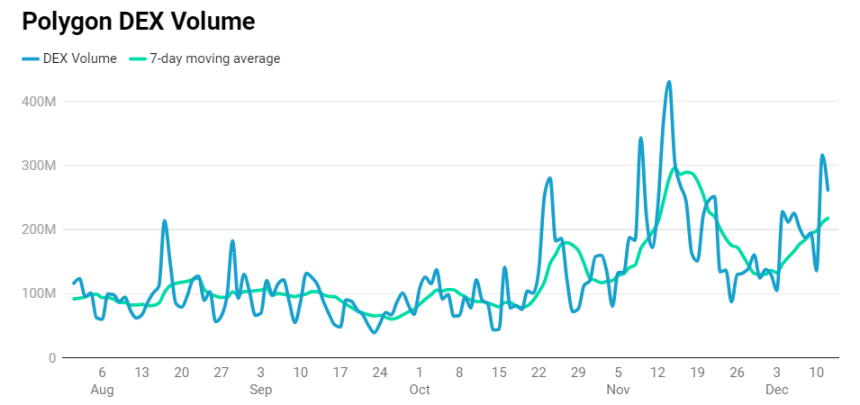
In recent months, the trading volume of Polygon DEX has seen slight growth, but its growth rate is not as high as Solana or Avalanche.
In a blog post released in July of this year, Polygon announced their 2.0 upgrade. Polygon is building a modular stack that includes "Supernets" (application-specific chains), privacy aggregators, and recently launched components such as Polygon zkEVM.
Key points of this update include:
- Redesigned protocol architecture
- Renaming the token from MATIC to POL
- Optimizing ecosystem benefits
- Strengthening security
- Increasing scalability
These factors may contribute to the rise of the MATIC token in 2024. If MATIC rebounds, applications worth noting include:
- Quickswap (QUICK: $45.02 million FDV) deployed on multiple Polygon layers, with a TVL of $1.2565 billion mostly on the PoS chain, where users can exchange tokens and trade perpetual contracts while enjoying a wide range of products and services beyond DeFi. QuickSwap has generated $10.3 million in fees and approximately $11 billion in cumulative trading volume this year.
THORChain (RUNE)

THORChain operates as an independent L1 cross-chain AMM, allowing users to exchange native assets across multiple chains without the need for wrapping or pegging assets.
THORChain Trading Volume
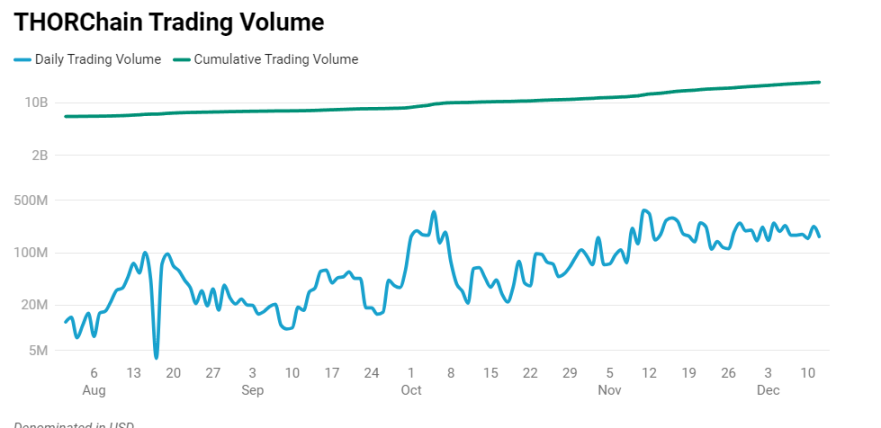
From the trading volume metrics, it is evident that the protocol's underlying technology is being effectively used for on-chain transactions. Recognized lending protocols in THORChain are actively burning most of the RUNE supply. Its lending model allows users to borrow BTC or ETH with multiple collateral options, zero interest, and no liquidation, although these loans require higher minimum collateral ratios ranging from 200% to 500% depending on market conditions.
If the ecosystem continues to grow, ecosystems that may perform well include:
THORSwap (THOR: $1.2954 billion FDV): This DEX aggregator offers one-click token swaps among 10 chains and over 5,000 assets, sharing 75% of revenue with users who stake their tokens. The protocol is currently burning tokens monthly based on trading volume and recently reached a TVL of $1 billion.
Maya (CACAO: $73.03 million FDV): As a branch of THORChain, Maya is a cross-chain DEX aiming to directly compete with centralized exchanges by reducing risks associated with such entities while providing deep liquidity and low fees.
Fantom (FTM)

Fantom is a high-performance blockchain from the previous cycle, once hosting one of the largest DeFi ecosystems. Since the collapse of Terra, the decoupling of Tomb, and the Multichain bridge vulnerability event, Fantom's activity has significantly decreased.
FTM TVL
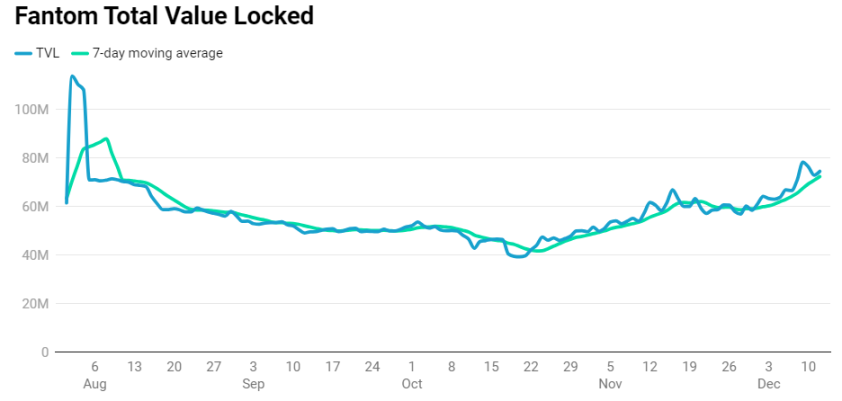
Despite going through a challenging period, the team is actively planning to soon launch a brand new blockchain technology to stay competitive. With the use of a new virtual machine and improved storage capabilities, the upcoming version named "Sonic" is expected to achieve over 2000 TPS. The upgrade is expected to be launched in the spring of 2024.
Applications that may perform well if the ecosystem continues to grow include:
- SpookySwap (BOO: $11.33 million FDV): Fantom's leading DEX offering native and cross-chain token swaps, and distributing a portion of trading fees to stakers.
- BeethovenX (BEETS: $4.43 million FDV): Derived from Balancer V2, BeethovenX is an AMM offering users the best exchange rates, minimal slippage, and stable yield opportunities. Token holders can earn a portion of the platform's generated exchange fees.
- WigoSwap (WIGO: $14.12 million): Wigo offers a range of products from trading to gaming, aiming to be the core of the Fantom ecosystem.
Cardano (ADA)

Cardano is a PoS blockchain that emerged in the previous cycle and is highly favored by retail investors. Although ADA has become a significant meme in many people's minds, the ecosystem's continued growth indicates increased adoption.
Cardano TVL
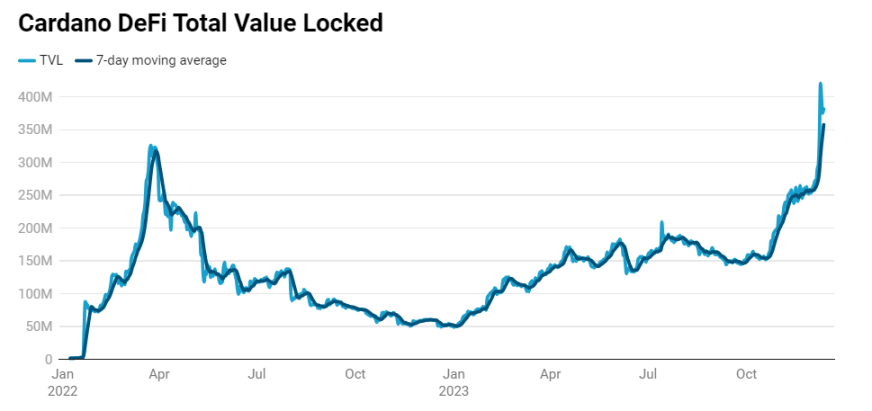
Despite not being known for its DeFi scene, Cardano has shown excellent growth in on-chain value and activity driven by its loyal community. To further incentivize usage and network efficiency, pain points around scalability are being addressed through an L2 solution called "Hydra." Hydra is defined as a homomorphic L2 for off-chain processing, with each Hydra "head" capable of handling 1000 TPS.
Some ecosystem applications on Cardano:
Indigo (INDY: $11.491 billion FDV): Cardano's preferred CDP platform, offering users the ability to create fully collateralized synthetic assets such as BTC, ETH, and USD.
Minswap (MIN: $17.428 billion FDV): Community-driven Minswap protocol is a leading DEX in the ecosystem, despite a vulnerability event earlier this year, it still leads in TVL and trading volume.
Here is a summary of each L1 metric presented in today's research report.
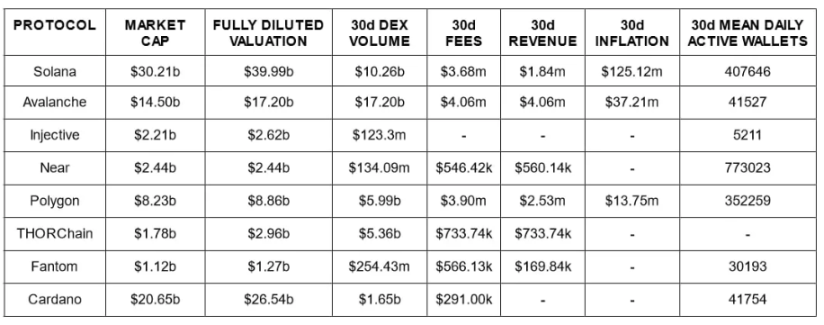
In conclusion, it is evident that some L1s have seen growth in fundamental metrics such as daily active users, TVL, and trading volume. However, more notably, many of these products have recently seen price appreciation far exceeding fundamental growth. We believe these tokens should be viewed more as narrative trades rather than long-term fundamental investments.
免责声明:本文章仅代表作者个人观点,不代表本平台的立场和观点。本文章仅供信息分享,不构成对任何人的任何投资建议。用户与作者之间的任何争议,与本平台无关。如网页中刊载的文章或图片涉及侵权,请提供相关的权利证明和身份证明发送邮件到support@aicoin.com,本平台相关工作人员将会进行核查。




